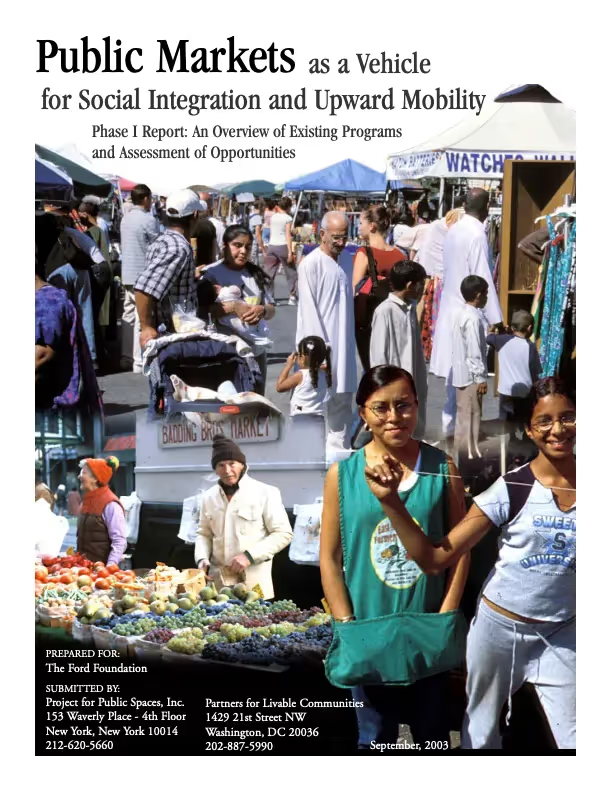A biweekly newsletter with public space news, resources, and opportunities.
A curated dispatch on all things public markets plus the latest announcements from the Market Cities Program.

One of the most obvious, but perhaps least understood, methods of enhancing social integration in public spaces and encouraging upward mobility are public markets.Increasingly, community leaders and local government see public markets as a means of addressing some of the more vexing problems of our cities: the need to bring people of different ethnic groups and incomes together; the need to make inviting and safe public spaces; the need to reinvigorate low- and moderate-income neighborhoods and to support small-scale economic activity; the need to provide fresh, high-quality produce to inner-city residents; and the need to protect open space and preserve farming around cities.
Produced with support from the Ford Foundation, this report summarizes the results of a six-month research effort where Project for Public Spaces in association with Partners for Livable Communities took a fresh look at public markets that serve low- and moderate-income, ethnically diverse communities. This research allowed us to address specifically how public markets enhance the potential for social integration in public spaces—attracting diverse income levels, ages, and ethnicities—and thereby create a sustainable vehicle for upward mobility and individual empowerment for low-income communities. For the purposes of this study, therefore, we defined a successful market as: one that succeeds in both its economic and social aspects and can sustain both over the long term.
The research began with a scan survey of over 100 markets. From this list, eight were selected for detailed case study research, which included customer and vendor surveys, interviews with market management, and, when possible, a focus group of vendors, customers, and other involved parties.